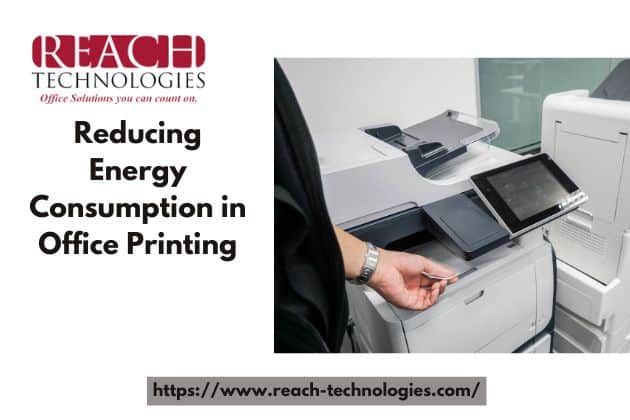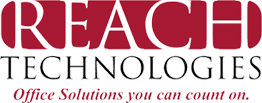In modern offices, printing remains a necessary function, yet it often goes unchecked in terms of environmental and financial costs. Every sheet printed consumes paper, toner, and, critically, electricity. Reducing energy consumption in office printing is no longer optional—it’s a strategic necessity. Through smarter practices and advanced technology, organizations can achieve significant savings while reducing their environmental footprint.
Understanding the Energy Impact of Office Printers

Office printers, especially laser printers and multifunction devices (MFDs), consume substantial energy. This includes standby, active printing, and warm-up phases, each drawing power in varying degrees. A single printer can consume hundreds of kilowatt-hours annually if left unchecked.
When scaled across an enterprise, printing becomes a major energy sink, contributing to higher electricity bills and increased carbon emissions. A comprehensive energy reduction strategy must begin with auditing the actual consumption of all print-related devices.
Choosing Energy-Efficient Printing Equipment
One of the most effective steps toward reducing energy use in printing is to upgrade to ENERGY STAR® certified printers and MFDs. These devices are engineered for:
-
Low standby power consumption
-
Faster warm-up times using instant-on technologies
-
Automatic duplex printing that reduces paper usage and energy demand
Brands like HP, Canon, Ricoh, and Brother offer printers optimized for energy savings without compromising performance. Energy efficiency ratings should be a top criterion when acquiring new print hardware.
Implementing Print Management Software
Print management software like PaperCut, uniFLOW, and Equitrac enables businesses to monitor, control, and reduce print jobs. These platforms provide:
-
User authentication to eliminate unnecessary prints
-
Print quotas to reduce waste
-
Real-time usage tracking
-
Default duplex and grayscale settings
By encouraging conscious printing behavior, these tools directly impact energy consumption. More importantly, less printing equals less power usage—from toner handling to device activity.
Leveraging Print Policies and User Education
Establishing clear, company-wide print policies ensures everyone contributes to energy reduction goals. Recommended policies include:
-
Mandatory duplex printing
-
Default black-and-white printing
-
Restricting color prints to necessary departments
-
Encouraging digital document sharing over printing
Employee awareness campaigns are equally critical. Conduct regular training sessions and visual reminders that emphasize the environmental and financial costs of excessive printing.
Using Sleep Mode and Auto-Power Down Features
Modern printers come with eco-friendly features like sleep mode and auto power-off settings. However, these settings are often underutilized. Optimizing printer configurations can lead to dramatic energy savings.
-
Set sleep mode to activate after 5 minutes of inactivity
-
Enable auto shutoff during off-hours or weekends
-
Ensure wake-up settings are aligned with office hours
Reach Technologies offers configuration audits that ensure every printer operates at maximum efficiency.
Reducing Print Volume Through Digital Alternatives
Encouraging digital workflows is a long-term solution to energy reduction. Consider replacing printed documents with:
-
Electronic signatures
-
PDF annotations
-
Cloud-based collaboration tools like Google Workspace or Microsoft 365
-
Digital forms and invoices
Not only does this reduce the number of prints, but it eliminates the power consumption associated with printing and scanning. The shift to digital also enhances document security and accessibility.
Consolidating Printing Devices
Multiple desktop printers scattered throughout an office consume more power and require individual maintenance. By centralizing printing through shared multifunction devices, companies can reduce:
-
Overall energy draw
-
Supply redundancy (e.g., toners, ink, drums)
-
Maintenance costs and downtime
Consolidation also makes it easier to implement print control solutions and optimize output.
Scheduled Maintenance to Enhance Efficiency
Poorly maintained printers draw more power due to:
-
Slower print times
-
Frequent jams and retries
-
Inefficient internal processes
A scheduled maintenance program ensures that hardware functions at peak efficiency. Regular cleaning, firmware updates, and parts replacement reduce the stress on motors and heaters, lowering electricity consumption.
Monitoring and Reporting for Continuous Improvement
Track energy and printing metrics using tools like:
-
Energy Management Systems (EMS)
-
Printer usage dashboards
-
Monthly reporting via managed print services
Set measurable KPIs, such as energy consumed per page or monthly print volume. Constant visibility allows organizations to refine strategies and foster accountability across departments.
Sustainable Printing Supplies and Recycling
Switching to eco-friendly supplies—like remanufactured toner cartridges and chlorine-free paper—complements energy-saving initiatives. Additionally, setting up recycling stations for used cartridges and paper waste:
-
Reduces landfill contributions
-
Minimizes the carbon footprint from new supply manufacturing
-
Engages staff in sustainability efforts
Reach Technologies supports full-cycle printing sustainability—from supply sourcing to waste management programs.
Conclusion: Partner with Reach Technologies for Smarter, Greener Printing
Reducing energy consumption in office printing is achievable with the right strategy, tools, and partner. At Reach Technologies, we specialize in energy-efficient print solutions tailored to your office’s unique needs. From hardware optimization and policy design to software implementation and employee training, we help you lower costs and your carbon footprint.
Take the first step toward a smarter, more sustainable office—contact Reach Technologies today for a personalized consultation and transform your print environment.
